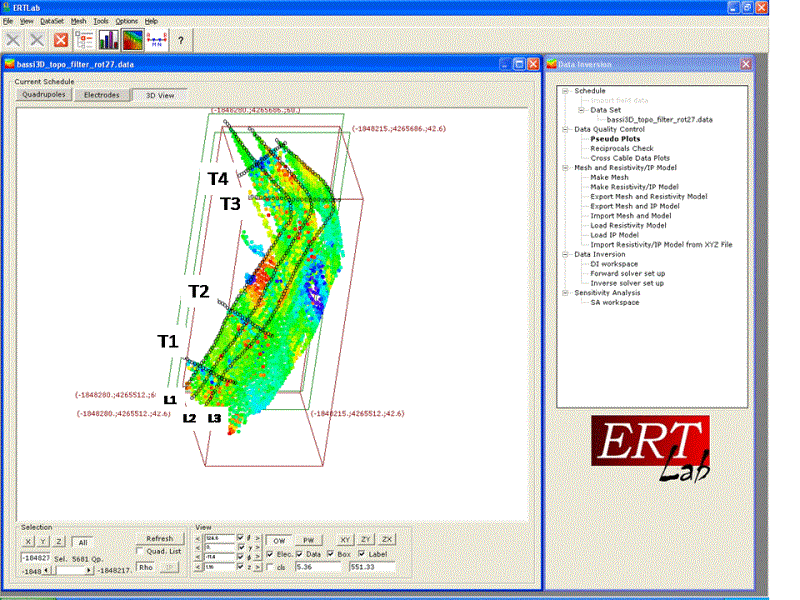3D Resistivity Inversion Software Applications
Materials for energy storage, production harvesting applications. Authors B. Orayech and D. Saurel. Affiliations CIC Energi. GUNE, Parque Tecnolgico, CAlbert Einstein 4. Miano, Spain. Resume The critical role of energy storage is by now self evident they are indispensable for an increased share of renewable energy and electric vehicles. Considering the abundance of sodium resources, sodium ion batteries NIBs are poised as an alternative to Li ion batteries as sustainable electrochemical energy storage EES solution. However, several technical challenges still remain to be addressed before the commercialization of NIBs, with the anode being one of them. Graphite has been employed as the anode for commercial lithium ion batteries LIBs since 1. However, for NIB, a high degree of disorder of the carbon structure is needed to allow sodium insertion at positive voltages. Boundless Electrical Resistivity Tomography BERT 2 the user tutorial Thomas Gun ther Carsten Ruc kery September 14, 2017 version 2. In this tutorial we. Therefore, alternative anode materials are demanded. One family of candidates is nongraphitic carbon, which comes in the forms of HC or soft carbon SC. For both SC and HC the amount of sodium ions that can be inserted at positive voltages between the graphene layers is greatly increased compared to graphite. The specificity of HC is to present an additional capacity traduced by a low voltage plateau LVP. Issuu is a digital publishing platform that makes it simple to publish magazines, catalogs, newspapers, books, and more online. Easily share your publications and get. Since the pioneer work of Stevens and Dahn in the early 2. V and the low voltage plateau are usually ascribed to defect assisted intercalation and packing of sodium within the voids opened between cross linked graphitic layers, respectively, 9 although recent results demonstrate that it might be more complicated than that. Due to this extra capacity due to the LVP, the effort of the community has been mainly focused in recent years on hard carbons and on improving their capacities by tuning their micro porosity. Thus, there is tremendous need to understand deeply the sodium insertionextraction mechanism into disordered carbons. In the present work an optimized PVC based SC as active material for NIB negative electrode will be underlined. A comparative study of the performance of PVC C compared to Sugar HC with similar particle size and electrode preparation will be presented. Although it does not present the typical low voltage plateau of hard carbons, PVC SC reaches an initial reversible capacity of 2. Ahg and retains 2. Ahg after 1. 50 cycles at 2. Ag. At high current density of 1. C 3. 72m. Ag, the electrode still can achieve a capacity of 1. Ahg with a Coulombic efficiency near 1. The microstructure and the morphology of these carbons have been studied by coupling gas adsorption, powder X ray diffraction in situ and ex situ PXRD and Small Angle X ray Scattering SAXS measurements, which, by correlating with their electrochemical performance, had led us to identify the and identifying key microstructural features at origin of the performance of PVC SC and give new insights into the mechanism of sodium insertion into disordered soft and hard carbons. Kim, S. W. Seo, D. H. Ma, X. Ceder, G. Kang. Adv. Energy Mater. Kundu, D. Talaie, E. Duffort, V. Nazar, L. F. Angew. Chem., Int. Ed. 2. 01. 5, 5. 4 1. Luo, W. Shen, F. Bommier, C. Zhu, H. Ji, X. Hu, L. Acc. Chem. Res. 2. Leibinger Jet 2 Manual on this page. Pan, H. Hu, Y. S. Chen, L. Energy Environ. Sci. Slater, M. D. Kim, D. Lee, E. Johnson, C. S. Adv. Funct. Mater. Wenzel, S. Hara, T. Janek, J. Adelhelm, P. Energy Environ. Sci. Nagaura, T. Tozawa, K. Prog. Batteries Sol. Cells 1. 99. 0, 9, 2. Na ion batteries for large scale applications a review on anode materials and solid electrolyte interphase formation Muoz Mrquez, M. Saurel, D. Gmez Cmer, J. L. Casas Cabanas, M Castillo Martnez, E. Rojo, T. accepted to Advanced Energy Materials 2. D. A. Stevens and J. R. Dahn, J. Electrochem. Soc. 1. 48 2. 00. A8. 03 A8. 11. 1. C. Bommier, T. Wesley Surta, M. Dolgos and X. Ji, Nano Lett. Ultra microporous soft carbon as high performance active material for the negative electrode of sodium ion batteries Orayech, B. Clarke, C. Acebedo, B. Saurel, D. submitted.
